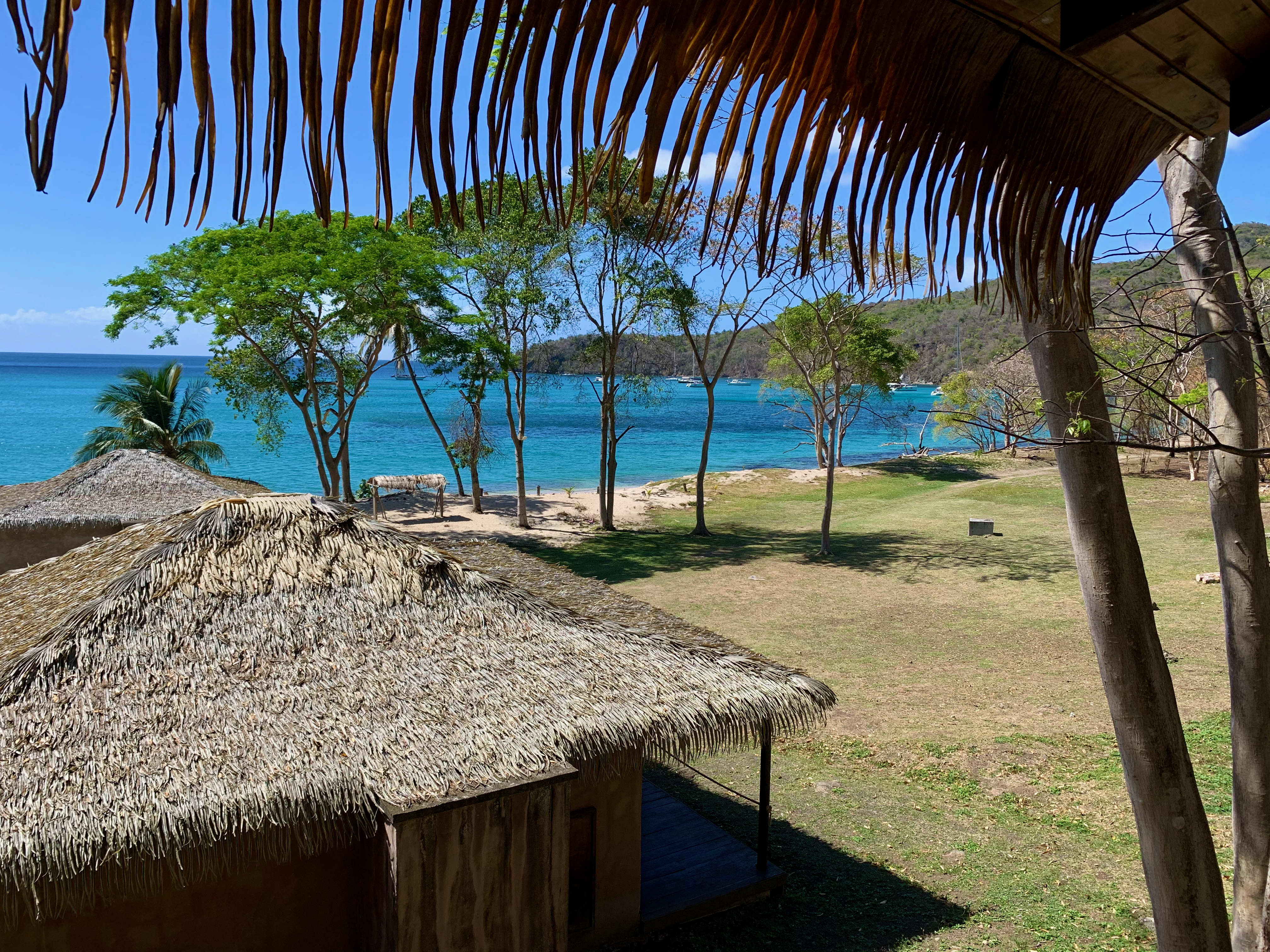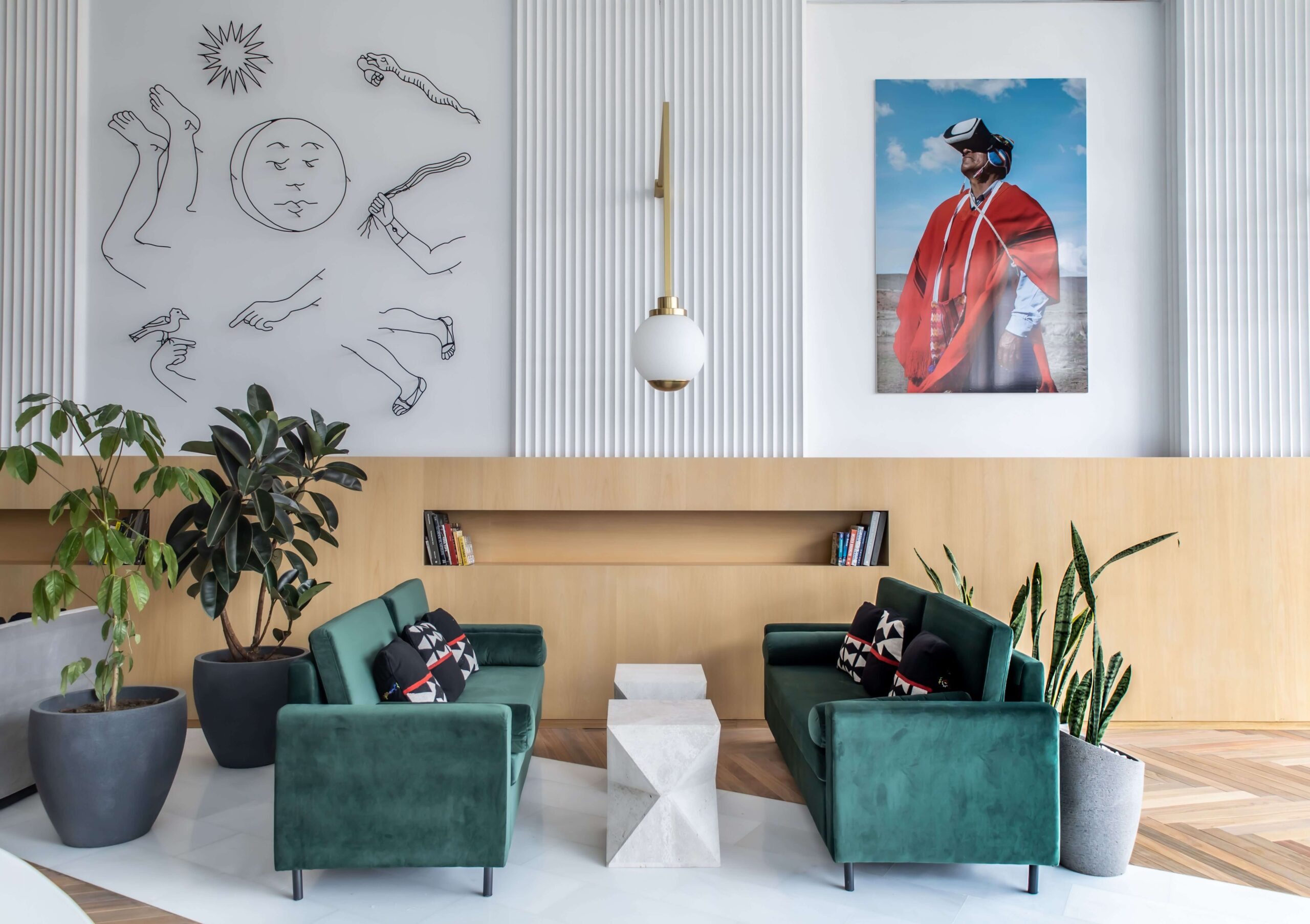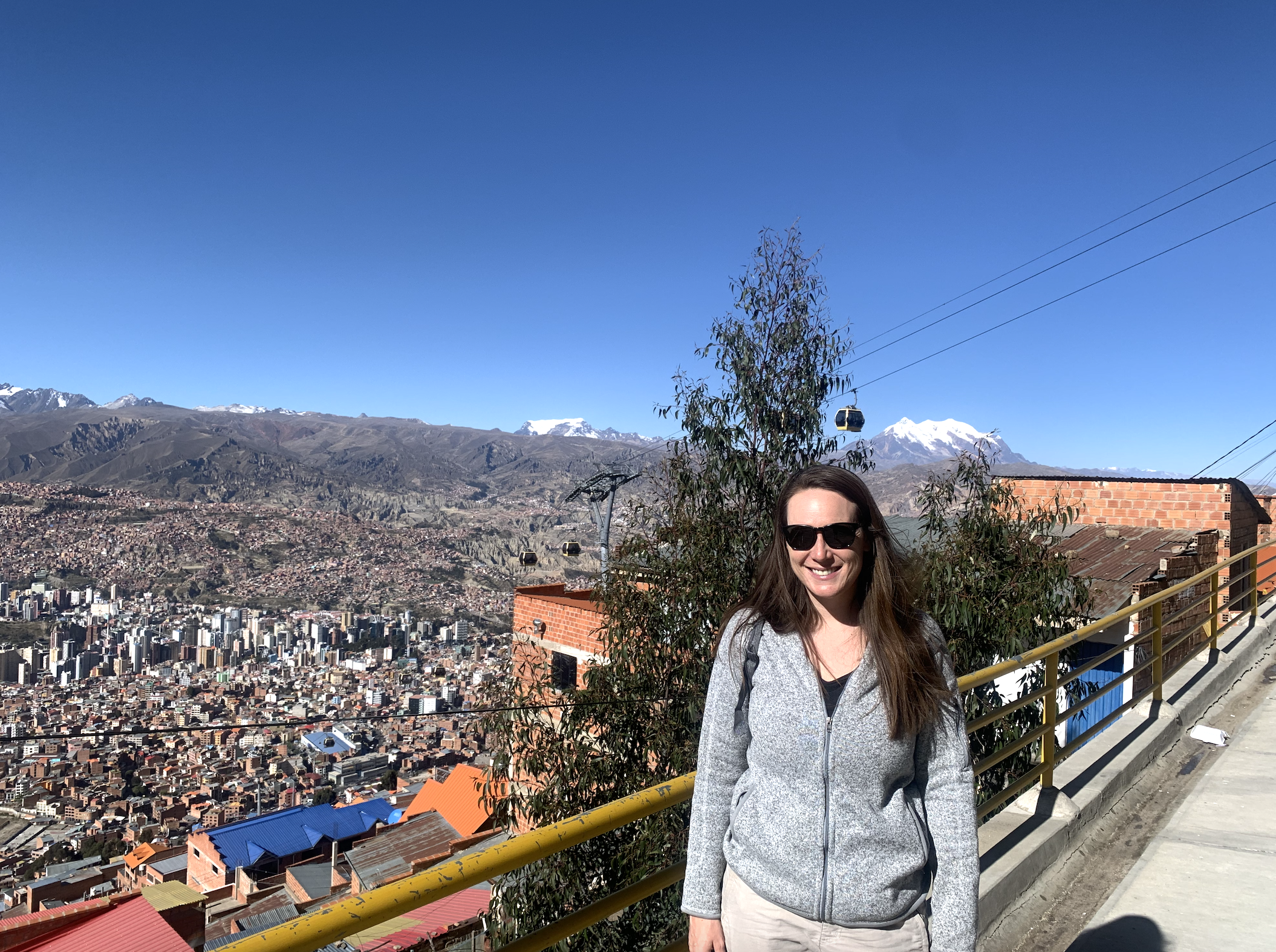
La Paz on Foot: Exploring the Urban Sights of Bolivia on a Walking Tour of La Paz
The gondola takes off from the station and we slowly soar up through the sky. The urban scene that unfolds in La Paz, Bolivia is unlike anything I’ve seen during my vast travels across the globe and I’m filled with an unexpected tingle of delight at the beauty before me. From looming heights, I sail above the city, a sea of terracotta buildings lays below, colorful bricks bathed in bright light from the crisp blue skies and fresh mountain air. In the distance, the white peaks of the Andes glow.
La Paz sits at an elevation of 12,000 feet, earning it the distinction of the highest city in the world, set in the highest and most isolated country in South America – Bolivia. In addition to the dizzying heights that cause many visitors to experience altitude sickness, the city of nearly one million residents has extremely unique – and challenging – topography. Built in a canyon, the city of La Paz is carved into ascending mountain terrain that climbs 1,650 feet to the neighboring city of El Alto.
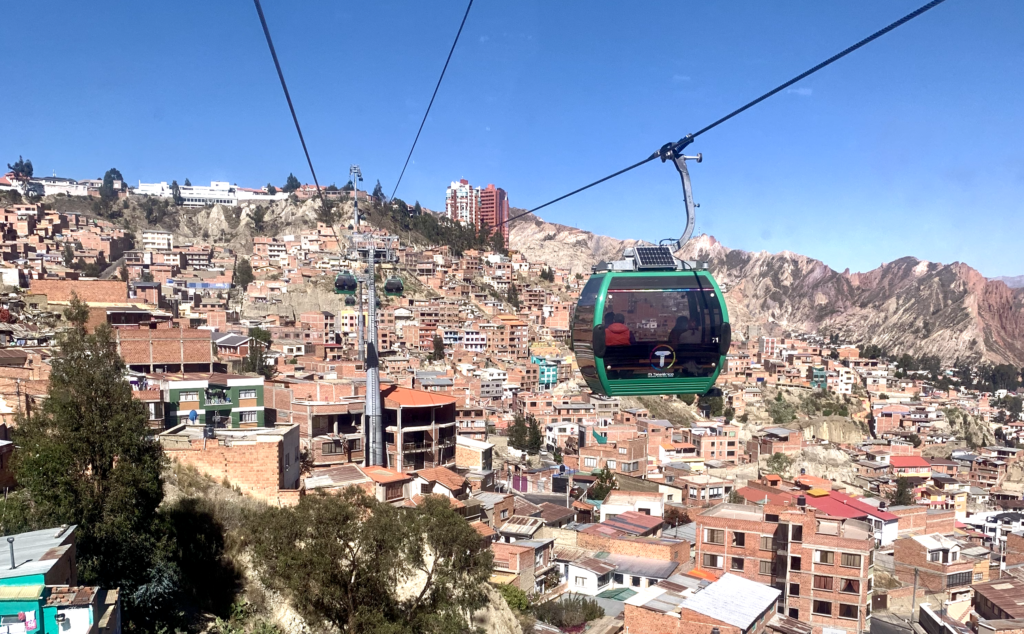
In a city this different – and sprawling – a savvy guide is a necessity. As a female solo traveler in Bolivia, I searched for a company that would offer an authentic look at this city and keep me safe while exploring. La Paz on Foot is a locally owned tour operator that provides Lonely Planet recommended walks and treks throughout Bolivia (and beyond with their umbrella company Explora Tours).
I explored the highlights of La Paz on a half-day urban trek with La Paz on Foot and, thanks to the knowledge and comradery of my guide Nayra Sandoval, got a genuine feel for the city.
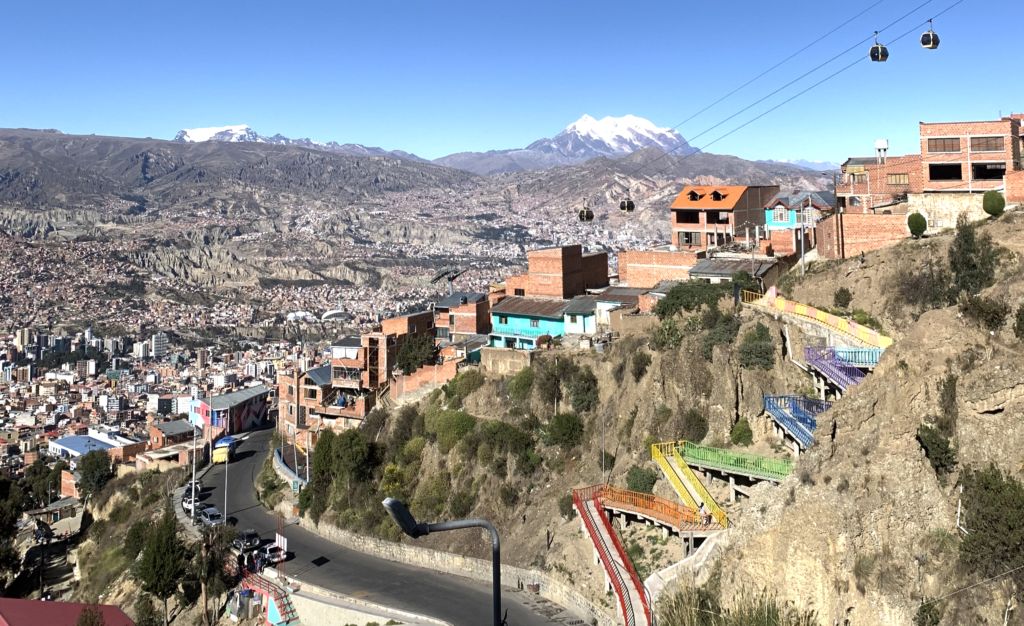
Mi Teleferico Cable Car System
Mi Teleférico is the perfect first stop for travelers in La Paz to get an orientation of this fascinating city and a bird’s eye view. Nayra began our La Paz walking tour at the Irpawi station of the cable car’s green line, closest to my home base in the city – MET Hotel in Zona Sur.
To navigate such challenging terrain, the Bolivian government constructed the world’s largest cable car system, Mi Teleférico, that stretches for nearly 20 miles across and above the urban landscape. Manufactured by the same company that has built gondolas for ski resorts across Europe, Mi Teleféricoprovides locals an alternative transportation method to the traffic-filled streets, and visitors the opportunity to glimpse the brick-lined streets and mountain landscapes of this city from above.
From the valley floor we ascend up to El Alto via two separate cable car lines, and Nayra fills me in on the basics of the city and its place in Bolivian culture. From above we are able to see the wide range of life experiences housed in La Paz. Rainbow-colored roofs mark one of the city’s largest orphanages – an estimated 10% of children in Bolivia are orphans. Meanwhile, opulent mansions that rival Beverly Hills sit below another section of the cable car system.

El Alto – Bolivia’s Second-Largest City
In El Alto, La Paz’ neighboring city that sits at an elevation of 13,650 feet, we disembark the teleférico and exit into the bustling streets, filled to the brim with honking cars and vendors selling everything from sim cards for cell phones to street food staples like choripan (chorizo sandwich) and pasankallas (Bolivian popcorn).

El Alto stretches out in a straight line. At this altitude the climbing cervices make way for solid, steady ground and brick buildings line the road as far as the eye can see. Amongst the standard brick we find several homes that stand out with brightly-colored facades and architecture, the adornments and colors slightly over the top. These are cholets, new homes of indigenous families who’ve come into wealth in recent times and put their financial prosperity on display in full opulence, perhaps reminiscent of gypsy homes in Romania.
El Alto also provides one of the best panoramic views in the region, towering over La Paz and staring straight out at the Cordillera Real, a majestic Andean mountain range with peaks as high as Mount Everest Base camp.
From a lookout point Nayra and I begin our descent. We follow a series of twisting staircases, steep and narrow, cement partially cracked, and wind past small shops and family homes. After about 15-minutes we arrive at a plateau that offers more gorgeous glimpses of La Paz below. From here we do as the locals do and hop on a bus to continue our descent back into the heart of La Paz.
Taking a local bus is one of my favorite ways to experience the world when I travel. Bolivia doesn’t disappoint. The bus quickly fills up and soon I am chatting with a local boy who asks me an abundance of questions about where I come from, how I got here and what I am seeing while visiting his home town. It’s a true delight to get to spend time in this space meeting locals.
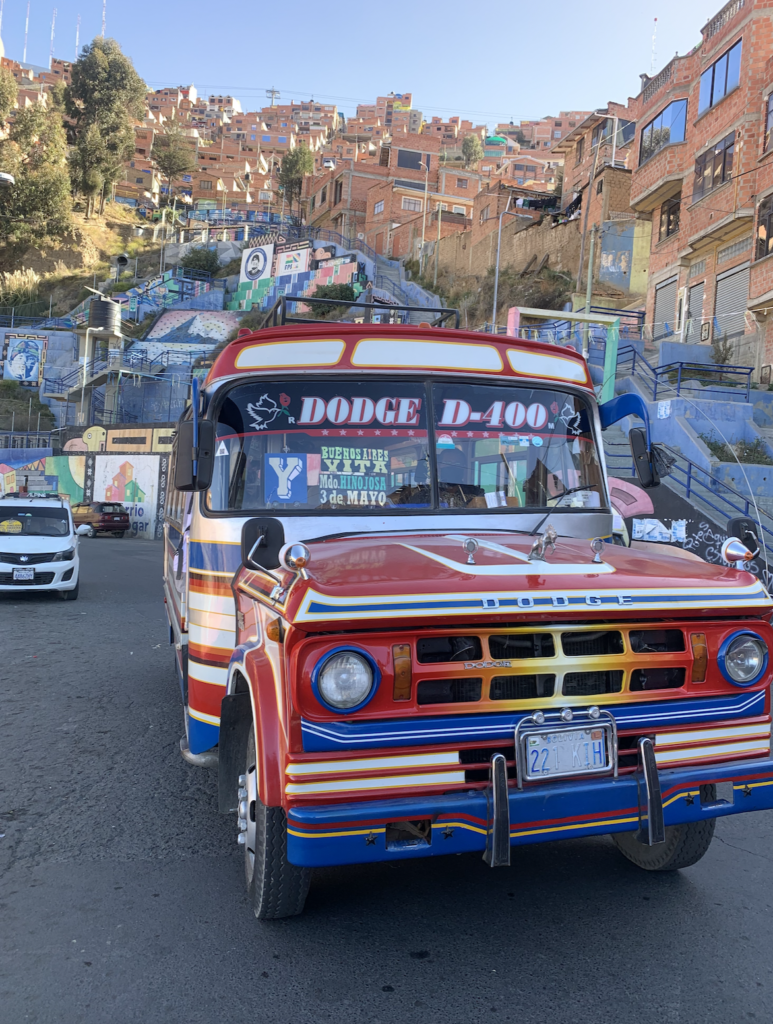
Markets of La Paz
La Paz, Bolivia is renowned for its many colorful and vibrant street markets. As we hop off the bus, our downward descent resumes, this time again on foot as Nayra and I wander through a series of markets.
My eyes are first greeted by a shimmering array of sequined dresses accompanied by bright red devil horns. These costumes are made by hand for the diablada, or dance of the devils, a pre-Columbian Andean folk dance that is still performed regularly in the country.

Next on our walking tour of La Paz, we reach a series of shops with seamstresses who make special occasion versions of the cholita dress, a long and pleated skirt and dress combination that most women I’ve seen in the city still wear today. Once associated with poverty, the traditional outfit has resurged in popularity and pride, in large part thanks to the indigenous rights revolution of Evo Morales.
Past the dress shops Nayra and I stop at a juice stand and I enjoy a fresh and delicious pineapple juice while a pirated copy of The Little Mermaid plays nearby on a television and one of the market stands. Here we’ve reached the section of the market where anything and everything is on offer, from DVDs and electronics to used clothing and alpaca yarn.
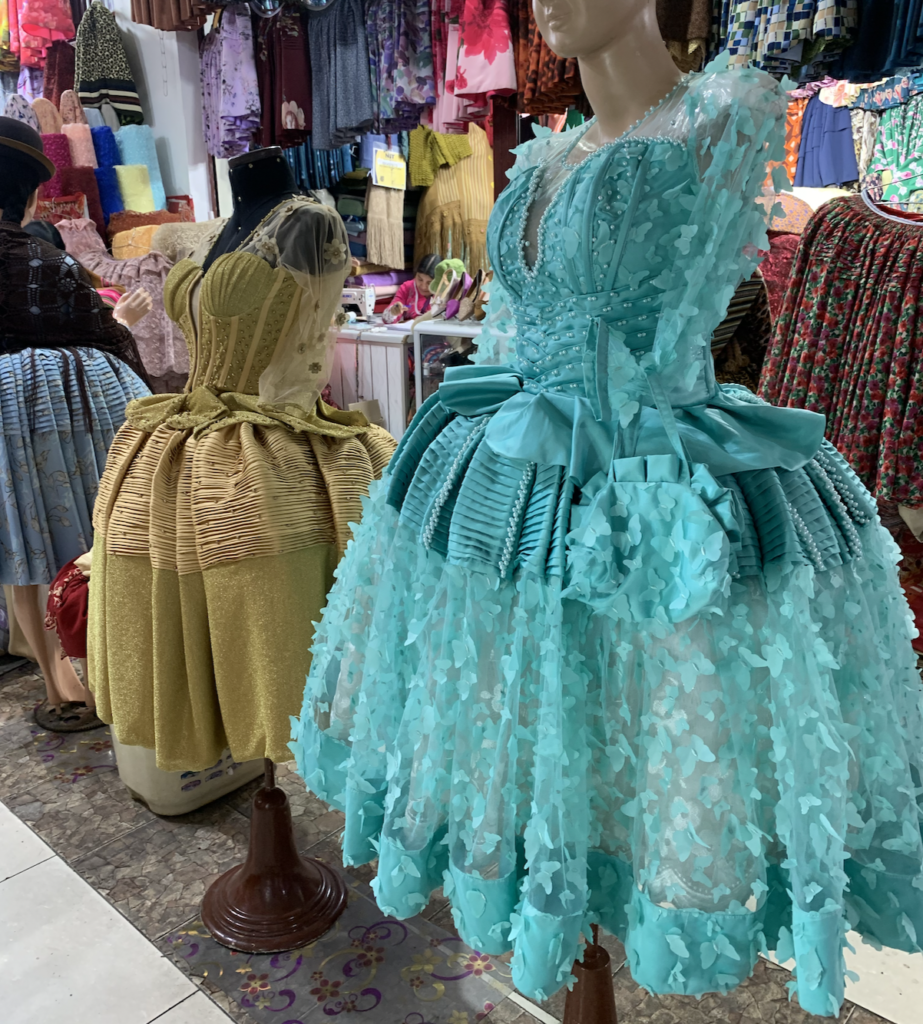
At last we reach Bolivia’s most famous market – el Mercado de las Brujas – or the Witches’ Market. It is here that for the first time in the entire day, I encounter other tourists along calle Linares, the most touristy corner of the entire city where shops sell adventure excursions, llama t-shirts and the location boasts the highest Irish pub in the world.
Small white llamas hang from the door frames and a sea of green plants peak out from shop aisles. The Witches’ Market is a thriving relic of pre-Columbian mysticism. Rooted in traditions of ritual sacrifices and black magic, here witch doctors tell fortunes and provide cha’lla, or offerings to bless life events from purchasing a new home to having a baby.

La Paz Walking Tour – City Center
Calle Linares leads to Basilica San Francisco, a Spanish cathedral founded in 1548. There’s a church that the Spanish built. The plaza that surrounds is full of life and sounds as families gather to watch street performances and enjoy a leisurely afternoon.
The Cathedral serves as a gateway of sorts to the city’s many museums and government buildings. Nayra and I wander to Plaza Murillo, the central plaza of the city which is home to the Presidential Palace and Catedral Metropolitana. The brightly lit church is much newer than the first we visited – it dates back to 1835. How youthful.
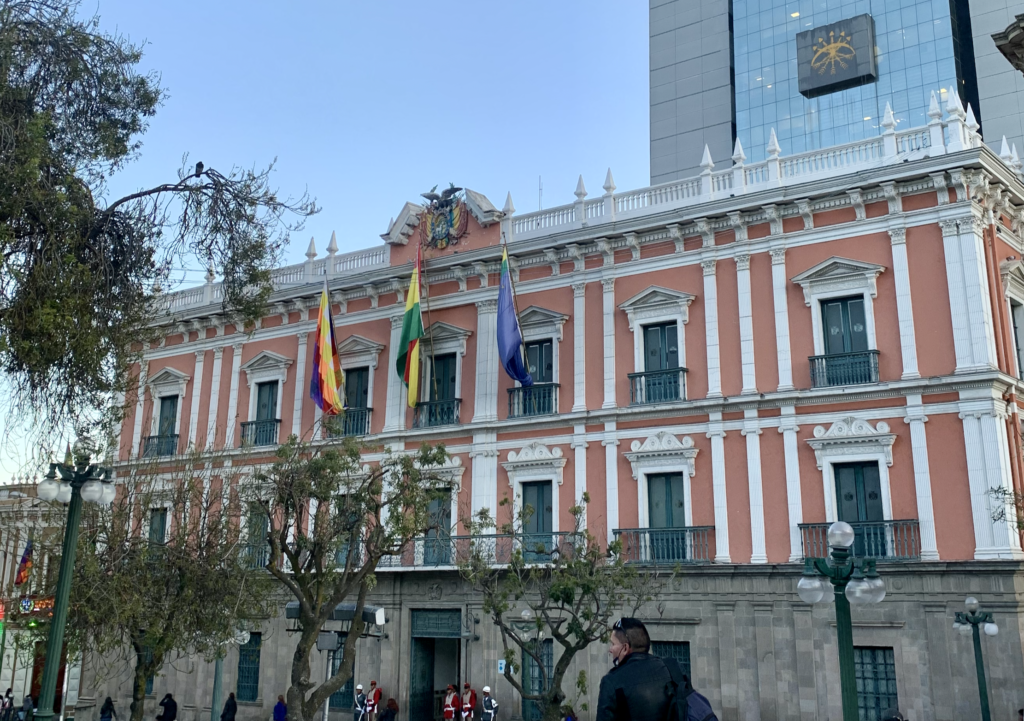
Zona Sur – La Paz Walking Tour Concludes
La Paz on Foot looks after their guests at every stage of the journey. To round out my experiences on local transportation, Nayra flags down a shared taxi and we pile into the car with three other strangers to split the fare back to Zona Sur where I’m staying for the night.
Zona Sur is one of the most affluent neighborhoods in La Paz and home to a high concentration of boutique hotels, restaurants and shopping options. As a female solo traveler in Bolivia I elected to stay in this neighborhood at MET La Paz, the city’s newest boutique accommodation. I was pleasantly surprised by how safe Zona Sur is and appreciated being in an area where I could freely walk around by day and night without any issues.
On the way back to my hotel we have one final stop to make. Nayra is a woman of many talents. In addition to speaking four languages, she is also a fashion designer and a collection of her work is for sale at a local boutique not far from my hotel.
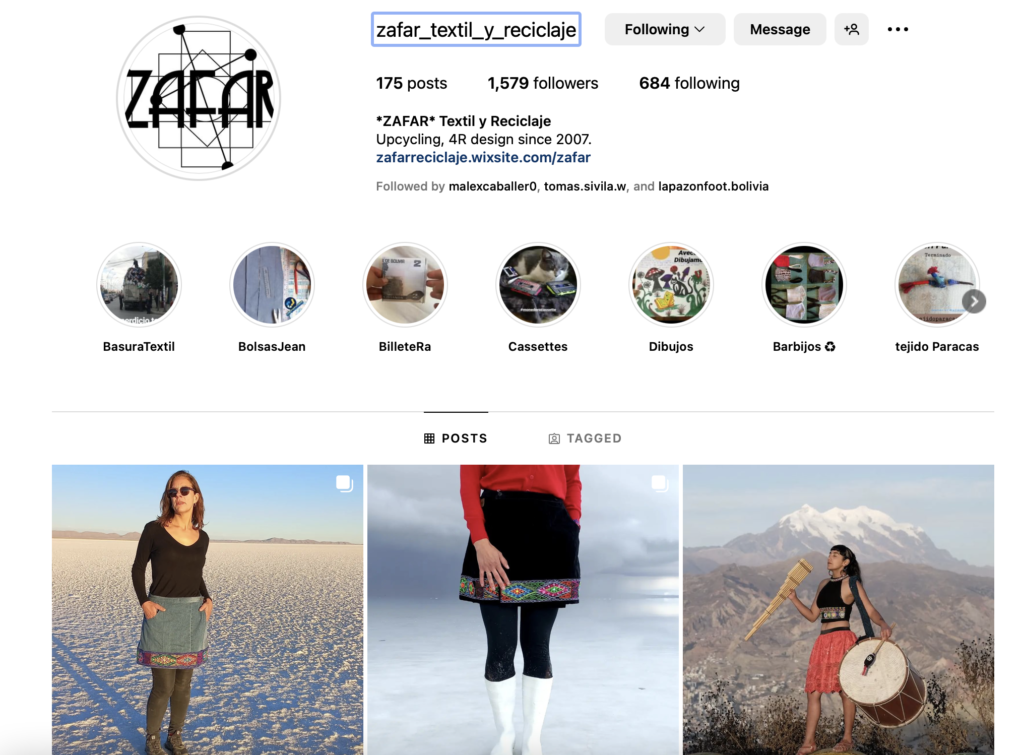
Through her brand Zafar she brings to life dreamy and imaginative designs that reflect a modern approach to Bolivian traditions. A steward of sustainability, many of her items incorporate upcycling, or recycling parts of interesting and classic pieces she finds at thrift and vintage shops. In addition to clothing items, her brand also offers postcards, handbags and other items that make for great souvenirs.
After I purchase a selection of postcards to take home to my family and friends we walk back to my hotel where I hug Nayra goodbye. My walking tour of La Paz is over. It’s been a full and wonderful day and I’ll go to bed with my mind swirling from all the diverse and eclectic scenes that make La Paz, Bolivia truly one of the world’s most unique and fascinating cities.

Note: A special thank you to La Paz on Foot for taking such great care of being during my solo visit with this walking tour of La Paz, Bolivia. Nayra was a fantastic and informative guide and is a fun person to spend the day with. Learn more or book your own guided trek or La Paz walking tour at lapazonfoot.com.


